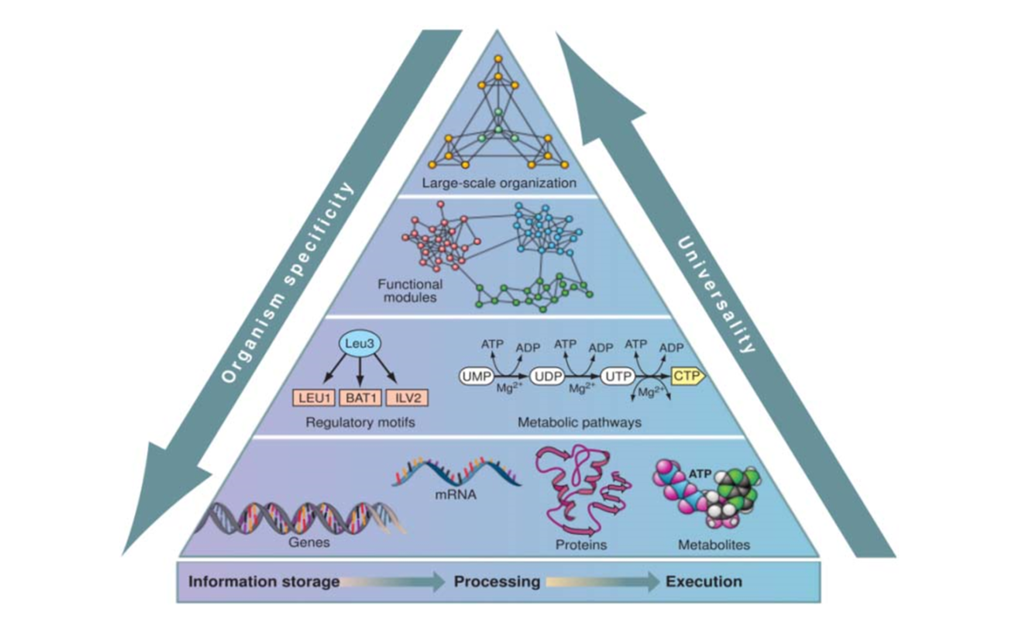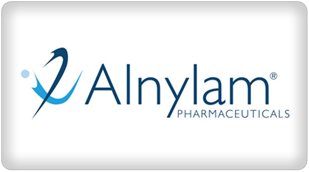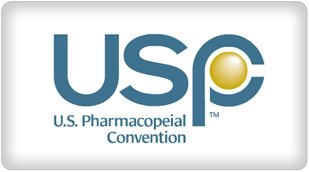Accelerating Discovery and Development
$1 Trillion Pharma industry is in peril with the growing inability to discover new molecules, and the problems in developing drug combinations, issues whose root is in a siloed systems model that is broken and archaic. The Pharma industry desperately needs alternative approaches to drug development, especially critical being the need for multi-combination therapeutics, and is on the lookout for companies offering new paradigms. CytoSolve offers this revolutionary paradigm using an information centric “in silico” approach, scalable & dynamic integration of molecular pathway models and feedback systems process.

CytoSolve Systems-Based Approach Delivers Tangible Solutions

CYTOSOLVE CASE STUDY: Alnylam – Multi-Combination Therapeutic for Hereditary Angioedema
 Alnylam is a leading pharmaceutical company, focusing their research on RNAi therapeutics for HAE (Hereditary angioedema). Angioedema is a non-itchy, pale swelling of subcutaneous or submucosal tissue that tends to recur chronically. HAE is characterized by the functional defect of factor XII or C1INH, which increases bradykinin production leading to vascular permeability. The siRNA therapeutics for serious, life-threatening HAE are restricted to limited patients and their caregivers. Efficient siRNA therapy for targeting genes related to HAE are limited due to the lack in correlation of different biomolecules in contact activation pathway. Alnylam collaborates with CytoSolve to explore the relationship between target knockdown and response for relevant genes. CytoSolve transformed the molecular pathways of contact activation and bradykinin production into in silico models. Differential sensitivity of bradykinin production and other simulation results are validated with in vivo and in vitro experimental data from the literature. The mechanistic in silico model then was able to predict the results from Alnylam’s in vivo studies. This validated computational models could be set as an initiative to further examine the combination of different siRNA.
Alnylam is a leading pharmaceutical company, focusing their research on RNAi therapeutics for HAE (Hereditary angioedema). Angioedema is a non-itchy, pale swelling of subcutaneous or submucosal tissue that tends to recur chronically. HAE is characterized by the functional defect of factor XII or C1INH, which increases bradykinin production leading to vascular permeability. The siRNA therapeutics for serious, life-threatening HAE are restricted to limited patients and their caregivers. Efficient siRNA therapy for targeting genes related to HAE are limited due to the lack in correlation of different biomolecules in contact activation pathway. Alnylam collaborates with CytoSolve to explore the relationship between target knockdown and response for relevant genes. CytoSolve transformed the molecular pathways of contact activation and bradykinin production into in silico models. Differential sensitivity of bradykinin production and other simulation results are validated with in vivo and in vitro experimental data from the literature. The mechanistic in silico model then was able to predict the results from Alnylam’s in vivo studies. This validated computational models could be set as an initiative to further examine the combination of different siRNA.
CYTOSOLVE CASE STUDY: Safety Testing for United States Pharmacopeia
 Use of dietary supplements by military personnel is well acknowledged and documented in a review conducted by the Institute of Medicine. About half of the US population uses dietary supplements. Concerns regarding the benefits and safety of dietary supplement use by military arise because (a) military personnel may have a different intent than the general population and (b) military personnel have unique challenges and needs. CytoSolve® computational systems biology platform provides for the dynamic integration of molecular pathway models, in silico, to understand synergistic effects of multi-ingredient dietary supplements on molecular pathways of biological processes. CytoSolve platform was used to evaluate the effect of combinations of arginine and caffeine, found in dietary supplements taken by military personnel, on nitric oxide production, which is directly related to cardiovascular health. The CytoSolve analysis revealed that arginine alone increased the nitric oxide concentration whereas caffeine alone reduced the nitric oxide concentration in healthy individuals. In combination, the results indicated that production rate in healthy individuals did not increase significantly by arginine supplementation. On the other hand, arginine supplementation attenuated NO production rate to nearly normal levels in hyperglycemic/hypertensive individuals.
Use of dietary supplements by military personnel is well acknowledged and documented in a review conducted by the Institute of Medicine. About half of the US population uses dietary supplements. Concerns regarding the benefits and safety of dietary supplement use by military arise because (a) military personnel may have a different intent than the general population and (b) military personnel have unique challenges and needs. CytoSolve® computational systems biology platform provides for the dynamic integration of molecular pathway models, in silico, to understand synergistic effects of multi-ingredient dietary supplements on molecular pathways of biological processes. CytoSolve platform was used to evaluate the effect of combinations of arginine and caffeine, found in dietary supplements taken by military personnel, on nitric oxide production, which is directly related to cardiovascular health. The CytoSolve analysis revealed that arginine alone increased the nitric oxide concentration whereas caffeine alone reduced the nitric oxide concentration in healthy individuals. In combination, the results indicated that production rate in healthy individuals did not increase significantly by arginine supplementation. On the other hand, arginine supplementation attenuated NO production rate to nearly normal levels in hyperglycemic/hypertensive individuals.
CYTOSOLVE CASE STUDY: MD Anderson – Multi-Combination Therapeutic for Pancreatic Cancer
 Pancreatic adenocarcinoma is an aggressive cancer, which develops without prominent symptoms. The intense knowledge on cellular and molecular mechanisms of pancreatic adenocarcinoma is required for early detection strategies, preventive measures, and effective interventions. Single therapeutic drug like gemcitabine, approved by FDA against pancreatic cancer is required at higher dose to show minimal effect with higher toxicity. Hence, recent research have focussed on identifying the combination of drugs with maximum effect on minimal dose against cancer. Minimum of 10 to 15 years of research is required, to identify a combination of two effective drugs against cancer. Thus, in order to gain mechanistic insights of drug combinations, mathematical models of EGFR (growth factor) induced cell cycle and apoptosis were constructed to represent the overall framework of pancreatic cancer. CytoSolve created Cyto-001, an in silico combination of two FDA-approved chemotherapeutic agents to measure the number of apoptotic cells minimizing cancer cell proliferation. Novel combination of two drugs – Cyto-001 for pancreatic cancer are approved by FDA for further clinical trials. This resulted in the development of a new joint venture with MD Anderson Cancer Center. Combination of two drugs are planned to be tested as second line treatment for patients with metastatic, gemcitabine-refractory pancreatic cancer, or as an alternative to gemcitabine as a first-line treatment for patients with unresectable, advanced and metastatic pancreatic cancer. In addition, CytoSolve employed the individual and combination effect of active ingredients from different nutraceuticals.
Pancreatic adenocarcinoma is an aggressive cancer, which develops without prominent symptoms. The intense knowledge on cellular and molecular mechanisms of pancreatic adenocarcinoma is required for early detection strategies, preventive measures, and effective interventions. Single therapeutic drug like gemcitabine, approved by FDA against pancreatic cancer is required at higher dose to show minimal effect with higher toxicity. Hence, recent research have focussed on identifying the combination of drugs with maximum effect on minimal dose against cancer. Minimum of 10 to 15 years of research is required, to identify a combination of two effective drugs against cancer. Thus, in order to gain mechanistic insights of drug combinations, mathematical models of EGFR (growth factor) induced cell cycle and apoptosis were constructed to represent the overall framework of pancreatic cancer. CytoSolve created Cyto-001, an in silico combination of two FDA-approved chemotherapeutic agents to measure the number of apoptotic cells minimizing cancer cell proliferation. Novel combination of two drugs – Cyto-001 for pancreatic cancer are approved by FDA for further clinical trials. This resulted in the development of a new joint venture with MD Anderson Cancer Center. Combination of two drugs are planned to be tested as second line treatment for patients with metastatic, gemcitabine-refractory pancreatic cancer, or as an alternative to gemcitabine as a first-line treatment for patients with unresectable, advanced and metastatic pancreatic cancer. In addition, CytoSolve employed the individual and combination effect of active ingredients from different nutraceuticals.
CYTOSOLVE CASE STUDY: MIT
 Humans were initially considered to possess a different number of genes when compared to a worm. However, during the human genome project, it was realized that humans have the same number of genes as a worm. Biology now recognizes that we cannot consider the human being to be made of just genes, but factors other than genes decides human physiology and disease conditions. These factors could range anything from thoughts, food or lifestyle, giving rise to a thinking based on systems biology. This sheds light on the concept of ‘wholism’, the basis for traditional Indian systems of medicine such as Siddha and Ayurveda. Creating mathematical model of the cell is an effective way of bringing wholism to Western medicine. This involves performing complex integrations of molecular pathway models, generally considered tedious and time-consuming. Various software systems exist for this purpose, however, the approaches used so far do not provide a scalable method to integrate multiple biological pathways to model the whole cell. Dr. VA Shiva Ayyadurai, during his research time at MIT, developed CytoSolve, a scalable architecture for integrating biological pathways. Its key features include an infrastructure that provides simple communications interface to each model, is distributed, Web-enabled, and automatically aggregates the models to build the integrated model. Dr. Shiva Ayyadurai validated CytoSolve by comparing the integrated results of the EGFR pathway with the monolithic model of EGFR generated by CellDesigner, a popular tool for building computational molecular pathway models. The results demonstrated the viability of the CytoSolve approach, which can now provide a basis for using computational methods to solve challenges in medical research.
Humans were initially considered to possess a different number of genes when compared to a worm. However, during the human genome project, it was realized that humans have the same number of genes as a worm. Biology now recognizes that we cannot consider the human being to be made of just genes, but factors other than genes decides human physiology and disease conditions. These factors could range anything from thoughts, food or lifestyle, giving rise to a thinking based on systems biology. This sheds light on the concept of ‘wholism’, the basis for traditional Indian systems of medicine such as Siddha and Ayurveda. Creating mathematical model of the cell is an effective way of bringing wholism to Western medicine. This involves performing complex integrations of molecular pathway models, generally considered tedious and time-consuming. Various software systems exist for this purpose, however, the approaches used so far do not provide a scalable method to integrate multiple biological pathways to model the whole cell. Dr. VA Shiva Ayyadurai, during his research time at MIT, developed CytoSolve, a scalable architecture for integrating biological pathways. Its key features include an infrastructure that provides simple communications interface to each model, is distributed, Web-enabled, and automatically aggregates the models to build the integrated model. Dr. Shiva Ayyadurai validated CytoSolve by comparing the integrated results of the EGFR pathway with the monolithic model of EGFR generated by CellDesigner, a popular tool for building computational molecular pathway models. The results demonstrated the viability of the CytoSolve approach, which can now provide a basis for using computational methods to solve challenges in medical research.
